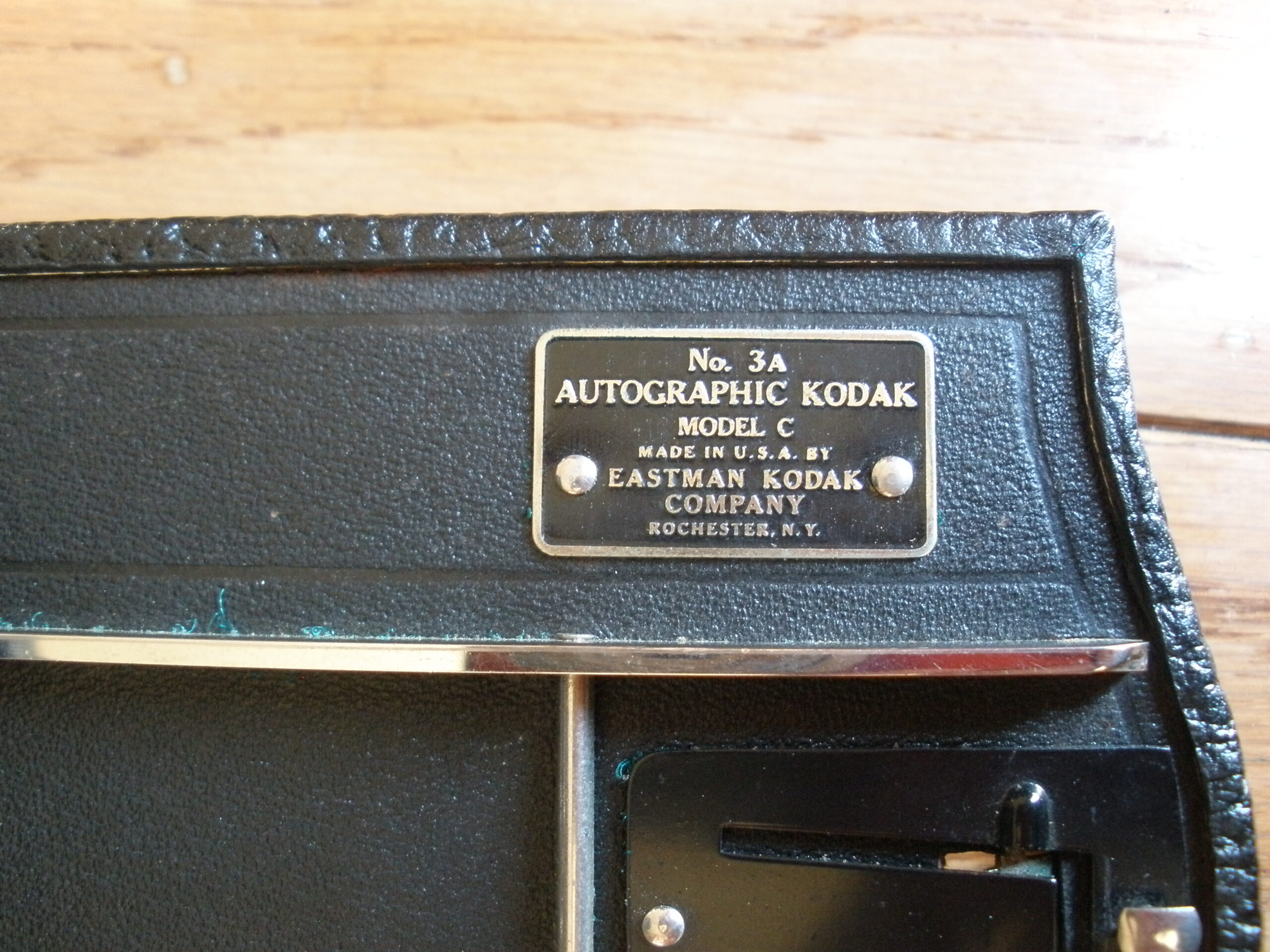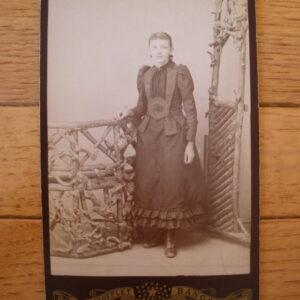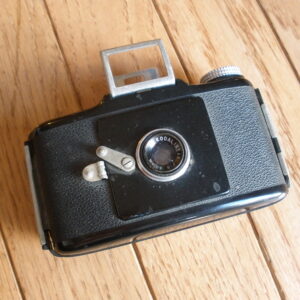For sale is an antique No 3A AUTOGRAPHIC KODAK MODEL C FOLDING BELLOWS CAMERA from the Eastman Kodak Company, Rochester, NY. The camera is marked with a 723853 serial number. The condition of the leather body covering and bellows is in excellent condition. This large camera is also a historically significant model because it thought to be the first coupled rangefinder camera model ever sold. The camera’s expensive $109.50 selling price in 1916 would amount to a $2,200 camera today. This camera features an ILEX shutter which was not available as an option until 1921. The camera has a Kodak Anastigmat f6.3 lens. A first rate collectible antique camera.
The autographic feature was patented by Henry Jacques Gaisman, who was an inventor and manufacturer of safety razors. George Eastman purchased the patent in 1913 for $300,000. The autographic feature was only available on Kodak cameras. There are two elements to the autographic feature: the film itself and the dedicated door fitted to the back of the camera.
A special metal scribing tool (sometimes referred to as a stylus) was provided, which could be stored somewhere on the camera body (usually either attached to the door or otherwise on a hanger on the lens standard). When the photographer wanted to make a note about a particular picture he had taken, the door was opened and the scribe was used like a pen to write and press the message against the small area of paper backing that was visible beneath the open door. The pressure of the scribe caused the inner carbon layer to compact and become translucent and the light that passed through the lines of the message written with the scribe left an image on the film. The door had to be left open for a second or two to expose the film. When the film was developed, the scribed message could be seen along the upper margin of the photograph.
From the company’s founding by George Eastman in 1888, Kodak followed a business strategy of selling low profit margin cameras and then making large profit margins on consumables such as film, chemicals and paper. As late as 1976, Kodak commanded 90% of film sales and 85% of camera sales in the U.S. The emergence of digital cameras sparked a death spiral for this iconic American company.














